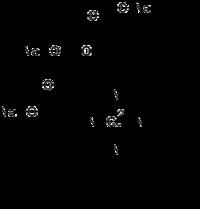Formula C34H31CuN4Na3O6 | Molar mass 724.15 g/mol | |
 | ||
Chlorophyllin refers to any one of a group of closely related water-soluble salts that are semi-synthetic derivatives of chlorophyll, differing in the identity of the cations associated with the anion. Its most common form is a sodium/copper derivative used as a food additive and in alternative medicine. Chlorophyll is present in green leafy vegetables and reaching levels as high as 5.7% in spinach. As a food coloring agent, copper complex chlorophyllin is known as natural green 3 and has the E number E141.
Contents
Chlorophyllin meaning
Cancer prevention
Because chlorophyll does not dissolve in water, food sources of chlorophyll do not bind to mutagenic substances to a significant extent. Chlorophyllin, being water-soluble, can significantly bind to environmental mutagens such as the polycyclic aromatic hydrocarbons benzo[a]pyrene and dibenzo{a,i}pyrene. Chlorophyllin binds to mutagens twenty times better than resveratrol and thousands of times better than xanthines.
Medicine and hygiene
Chlorophyllin is the active ingredient in a number of internally taken preparations intended to reduce odors associated with incontinence, colostomies and similar procedures, as well as body odor in general. It is also available as a topical preparation, purportedly useful for both treatment and odor control of wounds, injuries, and other skin conditions—notably radiation burns.
